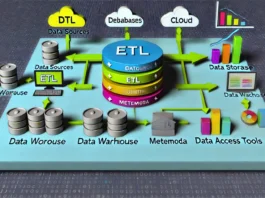Bitcoin price today is a hot topic among investors and traders alike. Understanding the dynamics of Bitcoin’s price movements requires delving into technical analysis, which involves dissecting crypto chart patterns, indicators, and various analysis techniques.
Let’s explore the dynamics of Bitcoin price today analysis from a technical perspective, shedding light on how traders use chart patterns and indicators to make informed decisions in the cryptocurrency market.
Bitcoin Price Analysis with a Technical Perspective
Bitcoin price USD often exhibits specific chart patterns that provide valuable insights into market sentiment and potential price movements. One commonly observed pattern is the head and shoulders chart pattern, which typically signals a trend reversal.
Traders keen on bitcoin price analysis watch for this pattern as it consists of three peaks: a higher peak (the head) flanked by two lower peaks (the shoulders). Conversely, the rectangle chart pattern, characterized by parallel support and resistance levels, indicates a period of consolidation before a potential breakout or breakdown in bitcoin price.
How can traders utilize bullish and bearish chart patterns in their analysis?
Bullish chart pattern, such as the bull flag or cup and handle, indicate potential upward price continuation. Traders identify these patterns by recognizing specific formations on the price chart, which suggests that buying pressure will likely outweigh selling pressure in the market.
Conversely, a bearish reversal pattern, like the head and shoulders pattern mentioned earlier, indicates a potential downturn in bitcoin prices. As you recognize the bullish reversal pattern and understand its implications, traders can adjust their trading strategies accordingly, whether entering or exiting positions or adjusting risk management measures.
What role does technical analysis play in predicting bitcoin price movements?
Technical analysis is a vital tool for predicting bitcoin price movements by analyzing historical price data and identifying patterns or trends that may repeat in the future. Traders rely on technical indicators, such as moving averages, relative strength index (RSI), and stochastic oscillators, to gauge market momentum and potential price reversals.
Additionally, pattern recognition plays a crucial role in analysis, allowing traders to identify recurring crypto chart pattern that often precede significant price movements. When combining fundamental analysis with proper risk management strategies, traders can make more informed decisions in the cryptocurrency market.
How do support and resistance levels influence bitcoin price prediction action?
Support and resistance levels are key areas on a chart pattern where buying and selling pressure converge, creating barriers that influence price movement. Support levels represent areas where buying interest is strong enough to prevent the price from falling further. In contrast, resistance levels indicate areas where selling pressure is sufficient to prevent the price from rising higher.
Traders use these levels to identify trades’ potential entry and exit points and set stop-loss and take-profit orders. Understanding support and resistance levels is essential for proper risk management and anticipating potential price reversals in the bitcoin market.
What are the best practices for proper risk management in bitcoin trading?
Proper risk management is ideal for success in bitcoin trading, as it helps traders minimize losses and preserve capital during adverse market conditions. Among the most critical aspects of risk management is position sizing, which calculates the optimal amount of money to invest in each transaction, considering size, risk tolerance, and likelihood of success.
Another way to minimize losses and safeguard against unexpected market swings is to establish stop-loss orders at necessary support and resistance levels. By adhering to proper risk management practices, traders can mitigate the influence of bad market conditions and improve their overall trading performance in the bitcoin market.
How do market trends impact bitcoin price analysis?
Market trends play a significant role in the price of bitcoin analysis, as they reflect the overall direction of price movement over a given period. Traders use trend analysis to identify whether the market is experiencing an uptrend, downtrend, or ranging conditions, which can help inform their trading decisions.
Trend-following strategies involve entering trades in the direction of the prevailing trend, while counter-trend strategies seek to capitalize on potential trend reversals. By identifying and following market trends, traders can align their strategy with the prevailing market sentiment and increase their chances of success in the bitcoin market.
What are the limitations of technical analysis in predicting bitcoin price movements?
While technical analysis provides valuable insights into bitcoin price movements, it has limitations. One limitation is relying on historical price data, which may not accurately reflect future market conditions.
Additionally, analysis cannot account for unforeseen events or market-moving news that may impact bitcoin price dynamics. Traders should also be cautious of over-reliance on technical indicators, as excessive use can lead to analysis paralysis and missed trading opportunities.
Despite these limitations, analysis remains a valuable tool for understanding market trends and making informed trading decisions in the bitcoin market.
Final Words
From a technical perspective, Bitcoin price analysis involves dissecting crypto chart patterns, indicators, and analysis techniques to gain insights into market sentiment and potential price movements.
When understanding various trading chart patterns, such as bullish and chart patterns, trading patterns, bitcoin technical analysis, and more tools effectively, traders can make more informed decisions in the cryptocurrency market.







